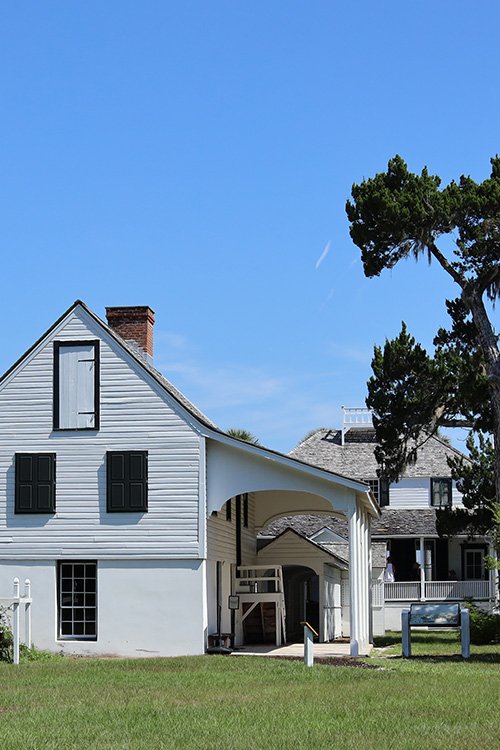Overview of Timucuan Ecological and Historic Preserve
Park Overview
As the only National Park in Jacksonville, Florida, Timucuan Ecological and Historic Preserve is worth exploring. This 46,000-acre park features hiking, biking, kayaking, and equestrian use trails. Today, coastal wetlands cover ¾ of the preserve. From paddling along the salt marsh and discovering a historic site to trekking through pine flatwoods, there is something for everyone.
Kingsley Plantation, Cedar Point, Fort Caroline National Memorial, American Beach, and the Theodore Roosevelt Area are some of the main attractions. Whether you’re planning a day trip or taking several mini adventures, there is a lot to explore and learn from this cultural and historical wonder. Retrace the steps through 6,000 years of Florida history, including that of the Timucua people, enslaved Africans at Kingsley Plantation, and a French colonial fort settlement from the 1500s. Off Mount Pleasant and Fort Caroline Road, you can grab more information at the Timucua Visitor Center and allow time to check out the fort exhibit.
Engraving of the Timucua - circa 1591 (Florida Memory)
Park History
Between 700 and 1500 C.E., this land was covered in Timucua villages where the native people dug out tree trunks to make canoes and hunted in the marsh for oysters and clams. Discarded shell mounds still exist in many parts of the park, referred to as “middens.” By 1562, French colonists made their way to Timucuan via the St. Johns River where they were greeted with food and gifts from the natives. Just east of the Visitor Center, you can check out a replica of the stone marker erected by French explorer, Jean Ribault.
The Timucua people assisted the Huguenots in the construction of the Fort Caroline settlement, recreated by the exhibit that draws visitors today. The triangular fort was constructed to defend the French against Spanish conquistadors. In 1565, the French were overtaken by a 500-strong Spanish militia led by Pedro Menendez de Aviles, and the land remained “La Florida” for over 200 years.
Kitchen House at Kingsley Plantation
From 1763 to 1865, plantations thrived in Florida through the end of the Civil War. At Kingsley Plantation, enslaved Africans cultivated staple crops, with Sea Island cotton as the main cash crop. Learn more here:
Ribault Club at Fort George Island
After 1865, the island flourished with citrus groves and became a recreational area for fishermen, golfers, and well-to-do guests at the Fort George Hotel. In 1889, the hotel burned down. This event, in addition to a yellow fever pandemic and the extension of Henry Flagler’s Florida East Coast Railroad brought an end to the tourist era for nearly 40 years until the Ribault Club was constructed in 1928 on the site of the former Fort George Hotel. Read more here:
Timucuan Ecological and Historic Preserve Visitor Center
By the 1970s, Congressman Charlie Bennett and other representatives worked to preserve this area’s historic sites and natural wetland wonders as an ecological and historic national park of Northeast Florida. In 1988, President Reagan signed the Timucuan Ecological and Historic Preserve National Park into law to be enjoyed for many generations to come.




